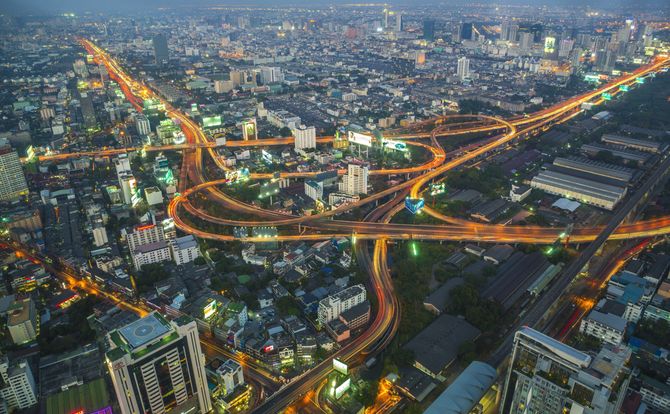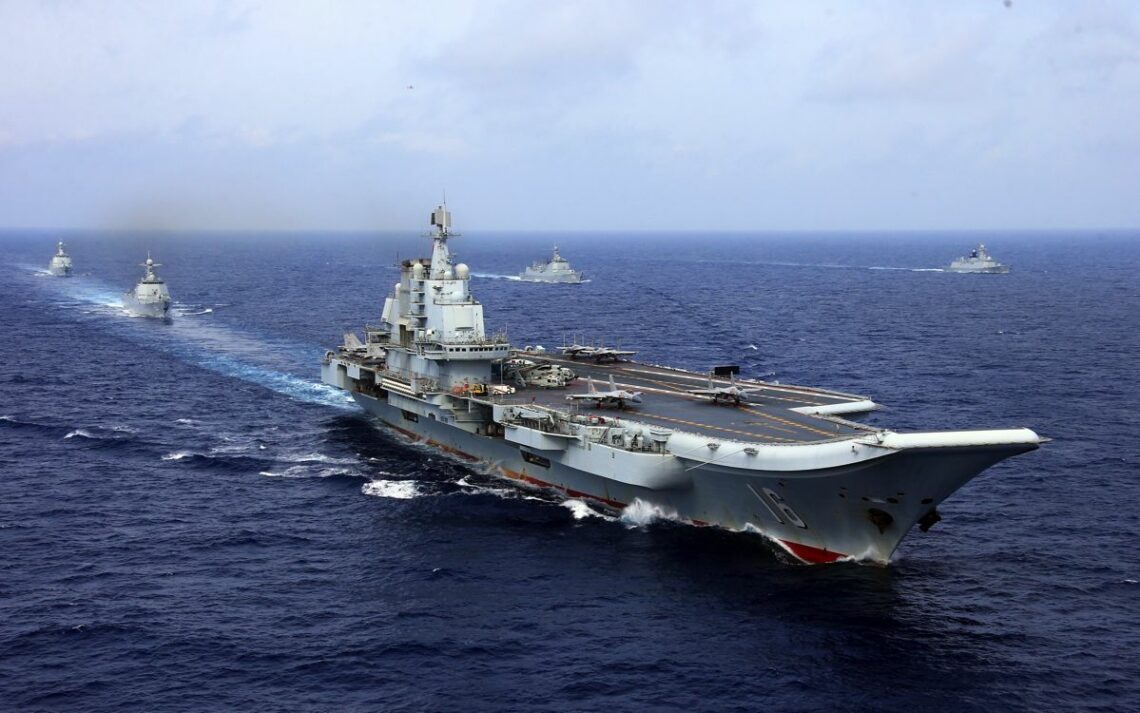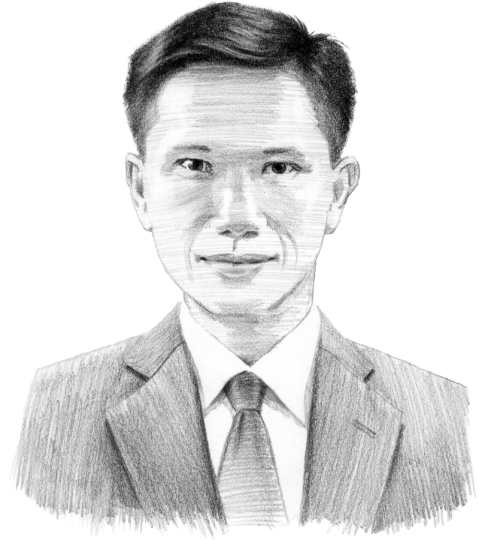A nexus of conflict and prosperity
For the first time since the Vietnam War, Southeast Asia has become a cockpit for great-power rivalries. China’s inexorable rise has split the Association of Southeast Asian Nations (ASEAN), which had become a regional broker for peace and prosperity.

In a nutshell
- China is using divide-and-rule tactics to split ASEAN’s mainland and maritime members
- The bloc’s mainland economies could benefit from more intraregional investment
- ASEAN can become an economic powerhouse if it manages Chinese expansion
The recent peace offensive by North Korean President Kim Jong-un, now stalled after United States President Donald Trump canceled the on-again, off-again bilateral summit meeting, has diverted attention from East Asia’s two other traditional hot spots – the Formosa Strait between Taiwan and China, and the South China Sea.
The latter body of water is treated by China as its own backyard, at the expense of other territorial claimants from the Association of Southeast Asian Nations (ASEAN). The severity and complexity of these unresolved disputes are bringing Chinese dealings with ASEAN into heightened geopolitical focus. Assuming the situation in North Korea does not blow up (a possibility that should not be dismissed), the highest-risk area in East Asia will likely be the South China Sea, which six of ASEAN’s 10 members border directly.
Just when it needs to close ranks, however, the organization that prides itself on being the cornerstone of Southeast Asia’s economic and security architecture is being split by China. ASEAN’s role has grown significantly since it was founded in 1967. Its paramount but little-noted achievement has been to preserve peace in the region. Along the way, the organization has turned its attention from regional security to economic development.
But now, as it seeks to build on its economic success as one of the world’s fast-growing regions, it also must contend with bigger geopolitical risks. These include threats in the immediate neighborhood, such as Chinese expansion and North Korea’s nuclear brinksmanship, but also a broader erosion of the world order, made manifest by the European Union’s post-Brexit weakness and by an increasingly unilateralist, more unpredictable U.S.
Geopolitical space
After previous failed attempts to create a regional organization in the early 1960s, ASEAN came to life in 1967 after Thailand helped mediate a shooting war between Indonesia and Malaysia. In its original five-country format, a regional equilibrium was ensured by predominantly Buddhist Thailand and the mainly Catholic Philippines, which balanced Muslim- and Bahasa-dominated Malaysia and Indonesia to the south. The island state of Singapore, itself a mix of most of the region’s ethnicities and religions, was the fifth founding member.
This association of four postcolonial states, with independent Thailand as its birthplace and facilitator, was created to ensure collective regional autonomy at a time of great power rivalry. ASEAN successfully weathered the Cold War confrontation between the U.S. and the Soviet Union and beat back the spread of local communist insurgencies.
Since its early years, ASEAN has had to contend with great power rivalries that divided Southeast Asia.
For more than half of its existence, ASEAN had to contend with a divided Southeast Asia. Myanmar became reclusive after falling under military rule in 1962, while the four countries of Indochina fell to communist takeovers. Although tiny Brunei joined the organization in 1984, it was not until the 1990s, after the Cold War ended, that all 10 Southeast Asian countries joined up.
Working through trade and investment forums like the Asia-Pacific Economic Cooperation (APEC) in 1989 and the ASEAN Free Trade Area in 1992, the organization evolved into East Asia’s most important hub for regional cooperation. Spin-offs including such familiar acronyms as ARF (ASEAN Regional Forum), APT (ASEAN Plus Three), EAS (East Asia Summit), ADMM-plus (ASEAN Defence Ministers’ Meeting) and RCEP (Regional Comprehensive Economic Partnership). In 2007, ASEAN achieved its institutional apex with the ASEAN Charter, which codified existing norms and envisaged future Southeast Asian communities on political, security, economic and sociocultural matters.
Return to history
As it turns 51, ASEAN finds itself with a new set of challenges that hark back to its formative years. Great-power rivalries again threaten to dominate the region, this time China against the U.S. in the South China Sea and, to a lesser extent, China against Japan on the Southeast Asian mainland. In the 21st century, history and geography are the drivers, not the old ideological battle of totalitarianism versus democracy, communism versus capitalism. After its “century of humiliation,” an inexorably rising China seems intent on reclaiming past glory as Asia’s center and prime mover.
China’s version of “manifest destiny” features its Belt and Road Initiative (BRI), inspired by the ancient silk road’s marriage of commerce, diplomacy and seafaring feats that traversed the Asian littoral and reached Africa in the 15th century. Providing financial backbone to this vision, China’s Asian Infrastructure Investment Bank (AIIB) works in tandem with the BRI by providing development finance to much of developing Asia and beyond.
China’s bold expansion is fueled by a strong sense of historical entitlement.
This bold expansion is fueled by a sense of historical entitlement – including to the reefs and waters of the South China Sea, where China is engaged in an ambitious military engineering program of land reclamation and construction of artificial islands. These sites are close to ASEAN’s maritime members, particularly the Philippines and Vietnam, which have competing territorial claims. Seven of the islands now serve as forward military bases, recently backed by a show of naval force led by the Liaoning, China’s only operational aircraft carrier, and observed in person by China’s President Xi Jinping.
On mainland Southeast Asia, China has taken control of the Mekong, building dams on its portion of the river (which it calls the Lancang) to the detriment of 60 million people living downstream in Cambodia and Vietnam. As with the South China Sea, China is trying to set its own rules via the Lancang-Mekong Cooperation, marginalizing the long-established Mekong River Commission.
And when President Donald Trump pulled out of the Trans-Pacific Partnership (TPP), China became keener to move ahead with the RCEP as a regional free-trade platform that includes all of ASEAN and its major trading partners in the region (Australia, China, India, Japan, South Korea and New Zealand), but happens to exclude the U.S.

Divide and rule
Geography is on China’s side, while ASEAN – as during the Cold War – is showing fissures between two camps. The mainland countries of the so-called CLMT (Cambodia, Laos, Myanmar, and Thailand) are largely unperturbed about the Chinese military buildup in the South China Sea, just as the Philippines and Indonesia show little concern for dam-building on the Mekong. This divergence of interests has allowed China to drive a wedge between ASEAN’s mainland and maritime members.
After the Philippines won an overwhelming legal victory in its dispute with China over the South China Sea, it was blocked from including wording about the international court’s judgment in ASEAN documents by Cambodia, which adopted an overtly pro-China stance. Coup-prone Thailand is also leaning more heavily on China for recognition and support, while Myanmar’s peace process is completely dependent on Beijing’s acquiescence. Even the Philippines’ elected strongman, President Rodrigo Duterte, has accommodated Beijing by setting aside the Hague tribunal’s ruling in hopes of working out investment and joint oil and gas exploration deals.
If ASEAN wishes to keep playing a central role, it must find a way to counter Beijing’s evident divide-and-rule tactics. Doing so will require playing the major powers against one another, much as the organization did in its early years. Moving closer to the Trump administration and to Tokyo would give ASEAN’s mainland and maritime members alike more leverage vis-a-vis Beijing. Unless it presents a more united front, the organization’s days as a broker and builder of regional architecture may be over. This would be damaging not only to the Southeast Asian countries, but to the major powers themselves, who would be deprived of a useful buffer and mediator.
Economic promise
In terms of economic development, ASEAN seems to be safely on course. The ASEAN Economic Community (AEC) was supposed to be the locomotive for integration in the region, but got off to a sluggish start after its launch in 2015. It appears there is much less here than meets the eye. If the AEC is to become a real force for economic integration, it will have to be reoriented toward promoting intraregional investment with the goal of strengthening Southeast Asia’s role in global value chains.
The ASEAN Economic Community is unlikely to lead to the bona fide integration seen in Europe and North America.
Trade among the ASEAN economies remains dominated by the original five founders – Indonesia, Malaysia, the Philippines, Singapore and Thailand. While the new mainland members – Cambodia, Laos, Myanmar, and Vietnam (CLMV) – have grown fast since they joined in the 1990s, they started from a low base and their combined economic weight remains modest. Tiny, oil-dependent Brunei is simply a marginal player. Most important for the AEC’s role as a free trade and investment area, its members remain overwhelmingly focused on external markets. Intra-ASEAN trade has hovered in the same range of 25 percent of its members’ total foreign trade for more than two decades.
Several new trends are worth noting, however. First, the mainland ASEAN economies are showing signs of tighter trade linkages, especially between Thailand and Vietnam. This pattern suggests that mainland Southeast Asia may become more economically integrated than ASEAN as a whole. Second, intra-ASEAN investment is growing and has contributed to the development of regional value-chains. This is the area where the AEC should put its main focus, rather than on trade. Third, ASEAN’s economic integration is best viewed in piecemeal terms as improved connectivity, not just in infrastructure but between people and between domestic and multinational firms. The AEC may be overhyped and unlikely to lead to the bona fide integration we have seen in Europe and North America, but it is still critical to keeping ASEAN cohesive enough for its members to benefit.
The export orientation of ASEAN economies and the relative lack of intraregional trade have important consequences. For these reasons, the AEC was designed as a regional production base to boost its members’ economic competitiveness and integration with the world economy. While the AEC also was supposed to promote more equitable economic development in the region, it was never conceived as a European-style integration platform. At best, it might mitigate the export-led growth model’s dependence on foreign direct investment, mostly from outside the region.
Mainland powerhouse
A silver lining for economic integration in ASEAN can be found in the mainland economies, where growing labor market integration allows several million migrants from Cambodia and Myanmar to work in Thailand. Over the past decade, bilateral trade between Vietnam and Thailand has doubled to more than $15 billion, vaulting Vietnam to Thailand’s second largest trade partner in the region, behind Malaysia. Thai foreign direct investment in CLMV (Cambodia, Laos, Myanmar, and Vietnam) has also increased on an unprecedented scale.
Road travel is now possible from Myanmar across Thailand and Laos, all the way to central Vietnam. This kind of connectivity gives the mainland countries of Southeast Asia a measure of economic integration, even as AEC moves forward at a slower pace. Such advances in infrastructure, especially in communications and transport, may turn out to be an effective substitute for integration, without the European element of supranationality. In this sense, it may be more consistent with the ASEAN’s fundamental makeup, which is more diverse.
Cambodia, Laos, Myanmar and Thailand are a combined market of 145 million consumers and more than half a trillion dollars of GDP.
In addition to CLMV, another space that may be called CLMT – Cambodia, Laos, Myanmar and Thailand – has a combined market of 145 million consumers and more than half a trillion dollars of gross domestic product. This area, with Thailand as its natural hub, is already closely knit and will become even better-connected with each passing year. Its demographic profile is relatively young, with an average age below 40 if one includes Vietnam (making it CLMTV) and rising incomes. Health care and financial services are increasingly compatible, with many ATM machines in Thailand offer neighboring languages and CLM patients flocking to leading Thai hospitals.
A broader mainland frame would encompass the Greater Mekong Subregion (GMS), which includes all five mainland ASEAN countries plus China’s southwestern Yunnan province and Guangxi autonomous region. This space has a combined population of 335 million and a $1.2 trillion GDP. For now, these economies are mostly connected by road. If rail connectivity comes on stream, including large projects as part of the BRI, it could be transformative for the whole region.
In short, ASEAN’s mainland members have important attributes – favorable demographics, rising incomes, dynamic economies and geographical location – that could help them “leapfrog” development stages and capitalize in an unanticipated fashion on the Fourth Industrial Revolution. The convention wisdom is that the region’s emerging economies may be left behind by technology, but the outcome is likely to be more mixed, with a significant potential to outperform. In other words, the ASEAN countries could be poised to reap a latecomer’s advantage in catching up with their more advanced peers.
Chinese options
The decisive variable in this mix is China. It has become the trump card for authoritarian government in East Asia and throughout the world, at a time when Europe is hemmed in by its own challenges and U.S. President Donald Trump sees his country as an aggrieved party that has suffered from shouldering the international order for seven decades. History is evidently not ending with the simple triumph of democracy and free markets. Indeed, China’s state-led capitalism and centralized political control – a model for having one’s cake and eating it, too – appears poised for a good long run.
How ASEAN fares in this new international environment depends on events in China. If the party-controlled political system remains stable and capable of delivering continued economic growth (even at a slower rate), the possibility of a “Pax Sinica” – as opposed to a more pluralistic “Asian Century” – becomes realistic. Chinese hegemony in Asia and beyond into Eurasia would be underpinned by grand geostrategic schemes such as the BRI and the AIIB.
A more likely scenario involves some pushback against China’s expanding influence.
A more likely scenario involves some countervailing pushback against the expansion of Chinese influence. This could come from a combination of the U.S., under a more assertive Trump administration, and a group of regional powers, especially Japan, Australia and India. These four countries have already tightened their cooperation with the concept of a “free and open Indo-Pacific” to check China’s expansionism.
The worst possibility of all would be an implosion in China. One plausible scenario would involve internal political unrest, as the more prosperous elements of Chinese society demand more of a say. Another would be a debt crisis and financial collapse as China’s state-led capitalist model proves ultimately untenable.
Clearly, ASEAN’s interest is to have a stable and peaceful neighborhood. That points to the second scenario of a more geopolitically balanced Southeast Asia as its most optimal outcome.








